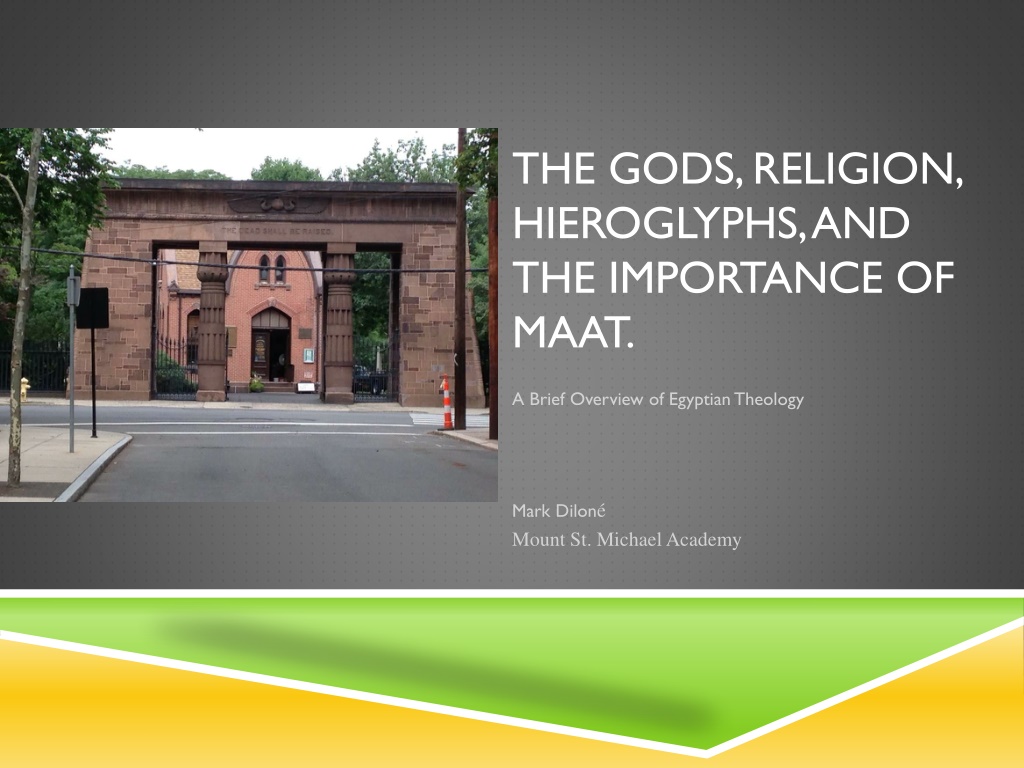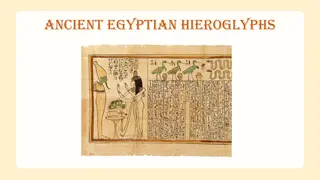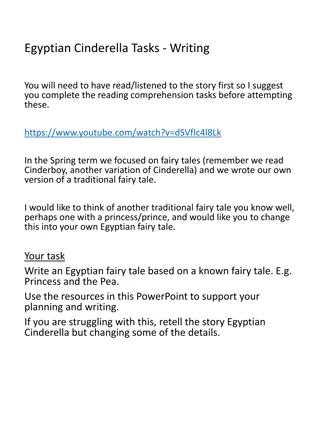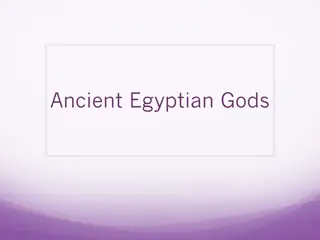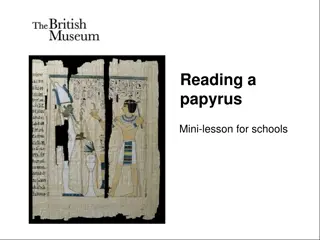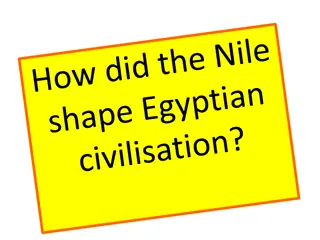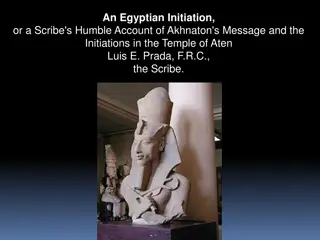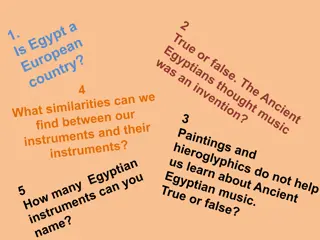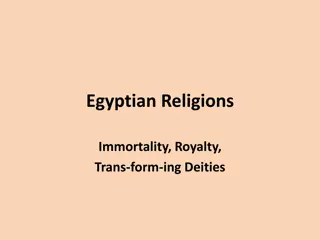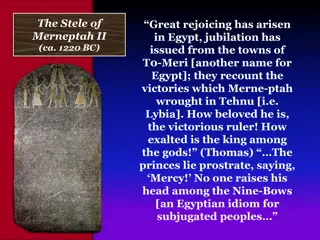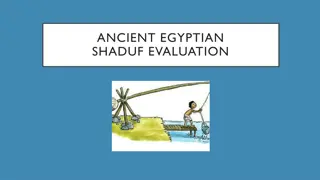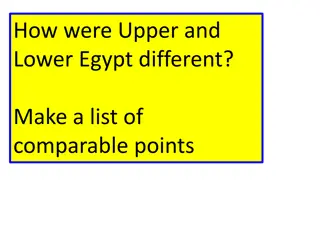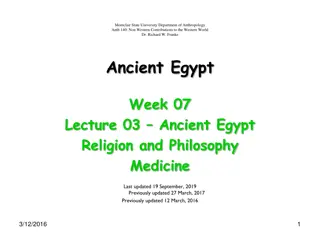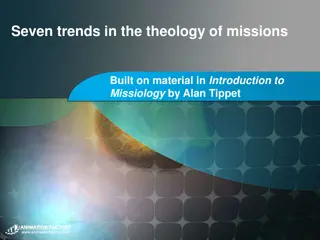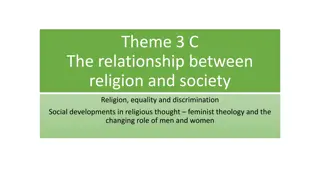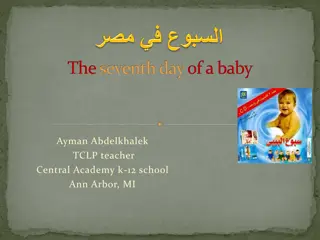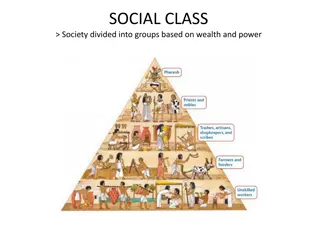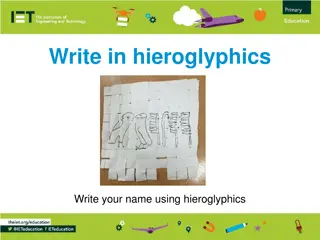Egyptian Theology and Hieroglyphs
Delve into the fascinating world of ancient Egyptian theology, exploring the role of gods, the significance of hieroglyphs, and the concept of Maat. Discover how the pharaohs were viewed as divine beings and learn about the intricate Henotheistic polytheism of Egyptian religious beliefs.
Download Presentation

Please find below an Image/Link to download the presentation.
The content on the website is provided AS IS for your information and personal use only. It may not be sold, licensed, or shared on other websites without obtaining consent from the author.If you encounter any issues during the download, it is possible that the publisher has removed the file from their server.
You are allowed to download the files provided on this website for personal or commercial use, subject to the condition that they are used lawfully. All files are the property of their respective owners.
The content on the website is provided AS IS for your information and personal use only. It may not be sold, licensed, or shared on other websites without obtaining consent from the author.
E N D
Presentation Transcript
THE GODS, RELIGION, HIEROGLYPHS, AND THE IMPORTANCE OF MAAT. A Brief Overview of Egyptian Theology Mark Dilon Mount St. Michael Academy
THE ROLE OF THE GODS Ancient Egyptians relied on the gods, for their well being and for the preservation of order in their world. The Egyptians had a polytheistic religious system. PTAH speaks the word of creation (HIEROGLYPHS) and is thus the main creator of all that is. Many people in the modern day believe that each was completely autonomous and worked only in a specific realm for instance. Re is the sun god, and Osiris is the god of the underworld. However each of the Gods was not autonomous rather the gods themselves are abstract and multiple.
THE GODS AS ABSTRACT BEINGS While each of the many gods was often associated with a specific animal representation, and a specific domain (job) they are in fact all representations of the main god of creation (Ptah). Often different cities in Egypt would have a specific god which they showed particular homage to, almost like a patron god, in this case that god could in a sense be the ultimate representation of the Creator god in that place. Example: At Heliopolis = Atum Re (the Sun god) is the Chief god. But at Hermopolis = Thoth is the chief god (although in other places Thoth was the god of writing and scribes ) in the city of Hermopolis he is promoted in a sense to the chief god. This is a Henotheistic view of the Gods.
WHAT DO WE MEAN BY HENOTHEISTIC POLYTHEISM. Polytheism: Belief in many gods/ Henotheism: Any god can be exalted to the rank of creator god, in the city which is dedicated to them, because all the gods are abstract representations of the one creator god, and in a sense one in being with him, but simply a different representation.
THE PHAROASAND THE GODS The pharoas are seen as divine particularly in death, where they unite with Osiris the god of the underworld in maintaining the order of the universe by helping the sun to rise each day. In the same way the Sun (Re) and Osiris are united each night as the sun travels. In this nightly journey of the sun through the underworld, Re is the soul and Osiris is the corpse. They are united and this allows the sun to rise each morning. In essence the soul and body are resurrected in the form of the rising of the sun each morning.
HIEROGLYPHS Hieroglyphs are literally the words the gods. In the Egyptian creation narrative the creator god (Ptah) speaks the words of creation, and the world and all that is in it is created by him. This makes hieroglyphs sacred to the Egyptians this also means that words are powerful and have divine origins. The Hieroglyph for god is NECTHER - it is represented by an inanimate flag in hieroglyphs.
MAAT Maat is the goddess of Justice and law. Maat is also the principle of Order over Chaos. Maat is the force by which the universe is balanced and it is the triumph of order over chaos. Egyptians relied on the Gods to Maintain Maat. But also believed in following virtues which would please the gods, thus the gods would maintain order.
